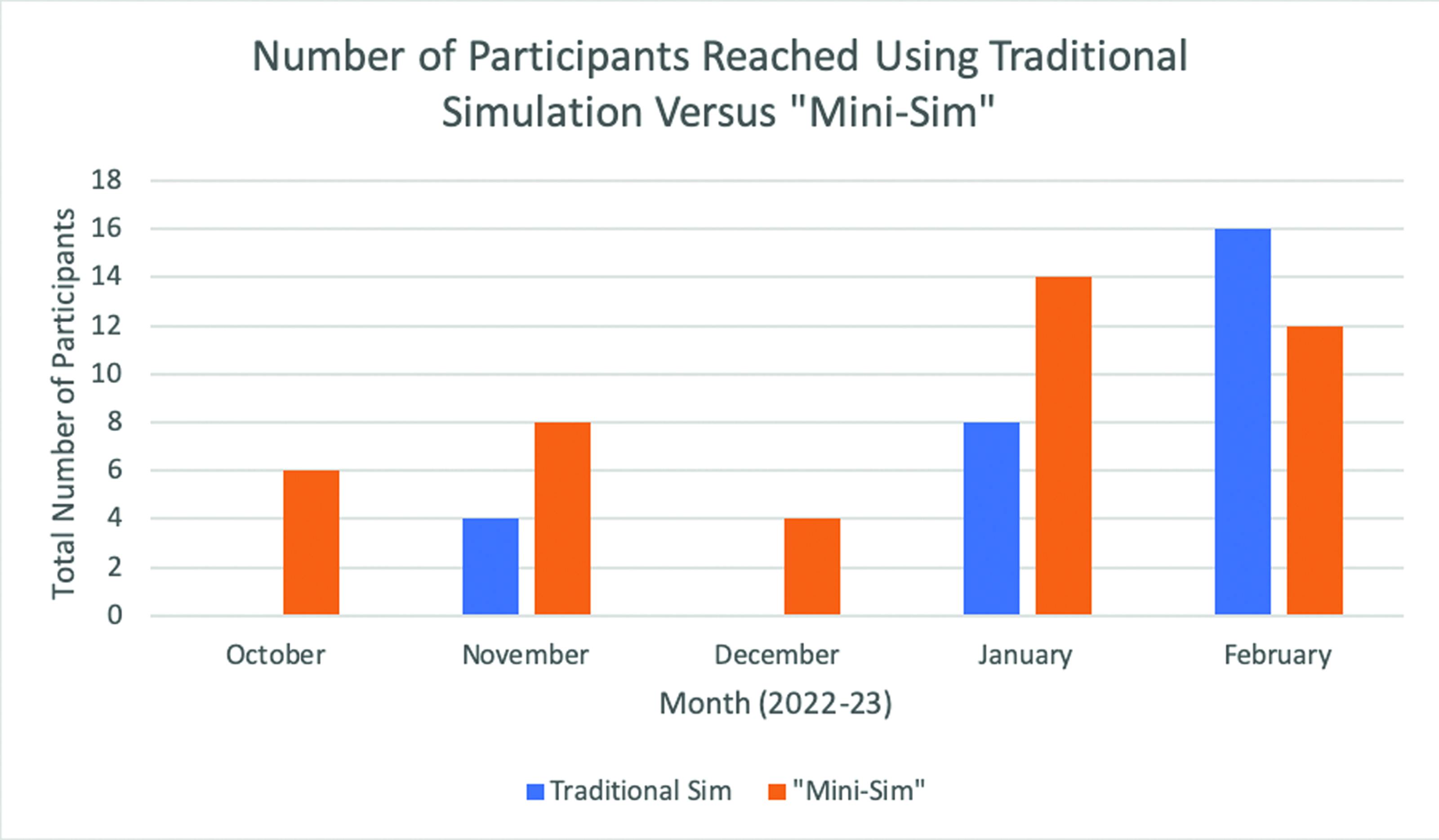
Simulations can be important for wider learning and patient safety [1]. However, the delivery of traditional simulations is not always feasible [2]. We developed an alternative ‘Mini-Sim’ to deliver high quality teaching with a sustainable approach, aimed to save time and resources.
The simulation team delivered traditional ward-based simulations every Wednesday. Where this was not possible, due to timing or staffing constraints, we delivered ‘Mini-Sims’. This involved participant verbalizing their assessments to a pre-written scenario with a facilitator asking follow-up questions as opposed to physically acting out. Data collected over 5 months included the type and duration of simulation, how many participants were involved, and resources required.
Across the 5 months, between 0 to 16 participants were reached monthly using traditional simulations, whereas ‘Mini-Sims’ reached 4 to 14, Figure 1-A62. Except in February, ‘Mini-Sims’ demonstrated greater monthly participation. The average ‘Mini-Sim’ took 15 minutes, a considerable difference to traditional simulations, which took 60 minutes to comprehensively implement. The delivery of one traditional simulation can be complex, requiring: minimum 3 staff members to facilitate and act; space and time on a clinical ward; and props. We were unable to deliver a traditional simulation if there were no technicians to manage the props or if there was insufficient ward space. Conversely, ‘Mini-Sims’ required only a script and a facilitator. In October and December, where no traditional simulations could be delivered, historically the wards would have received no simulation teaching those months. However, ‘Mini-Sims’ provided an alternative opportunity to reach 6 and 4 participants respectively. This is due to its simplicity resulting in less impact from ward and time pressures, or staff absence within the simulation team.


Where resources and time are limited, the minimalistic approach of ‘Mini-Sims’ provide consistent teaching opportunities and promotes sustainability in man-power, time, and costs. Whilst humble in appearance, ‘Mini-Sims’ show sizeable potential for sustainable learning.
Authors confirm that all relevant ethical standards for research conduct and dissemination have been met. The submitting author confirms that relevant ethical approval was granted, if applicable.
1. Ziv, A., Ben-David, S. and Ziv, Margalit. Simulation Based Medical Education: An Opportunity to Learn From Errors. Medical Teacher. 2005 Jul;27(3):193-199
2. Lin, K., Travlos, D.V., Wadelin, J.W. and Vlasses, P.H. Simulation and Introductory Pharmacy Practice Experiences. American Journal of Pharmaceutical Education. 2011 Dec;75(10)